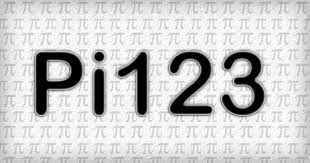Pi123 captivates mathematicians, understudies, and teachers alike, speaking to an interesting steady whose reach amplifies distance past the circumference of a circle. It’s a substance that has captivated the numerically slanted for centuries and proceeds to be a range of gigantic intrigues and investigations.
This comprehensive guide unfolds the layers of Pi123, from its definition to its historical journey, understanding its properties, real-world applications, and the captivating challenge of calculating its value. Whether you are a student grappling with geometry or a math enthusiast intrigued by this cornerstone of mathematics, here’s everything you need to unravel about Pi123.
Introduction: What is Pi123 and its Significance in Mathematics and Science?
Pi123 is a variant of the mathematical constant pi (usually denoted as π), celebrated for being the ratio of a circle’s circumference to its diameter. This irrational number, which begins with 3.14 and cascades into an infinite sequence of non-repeating digits, is the backbone of many formulas in mathematics and physics. Pi transcends the realms of geometry and trigonometry and plays a pivotal role in architectural engineering, computer science algorithms, and even the description of the genetic spiral.
The History and Discovery of Pi123
The quest to understand Pi dates back to antiquity, with contributions from numerous mathematicians across different cultures. Ancient Babylonians, Egyptians, and Greeks such as Archimedes laid foundational work in grasping Pi and its implications.
Understanding the Properties and Characteristics of Pi123
Being an irrational number, Pi cannot be expressed as a simple fraction, which gives rise to its never-ending, non-repeating decimal representation. Furthermore, as a transcendental number, Pi is not the root of any non-zero polynomial equation with rational coefficients, setting it apart from algebraic numbers.
Applications and Uses of Pi123 in Real-life Scenarios
From determining the area of a circle to unravelling the mysteries of universe structure, Pi123 is integral in countless formulas. Its role extends to physics in elucidating principles like Heisenberg’s uncertainty principle or Einstein’s field equations in the General Theory of Relativity.
The Calculation and Approximation Methods for Determining the Value of Pi123
Throughout history, the quest to calculate Pi has employed various methods, such as the Archimedes’ method of inscribed and circumscribed polygons. More modern approaches, like the Monte Carlo method, leverage random sampling. Series approximations, for instance, the Leibniz formula for Pi, have given rise to various algorithms used for calculations by high-speed computers.
The Importance of Memorizing Digits of Pi: Records and Contests
Memorizing the digits of Pi is more than a parlour trick—it’s become a competition symbolizing human memory’s incredible capacity. With records reaching tens of thousands of digits, remembering Pi has become a pursuit that merges the love for numbers with the challenge of extreme memorization.
In Conclusion: The Fascinating World of The Mathematical Constant Pi- Explained Through the Lens Of PI123
Pi123 is not merely about numeric fascination—it embodies the beauty of mathematics, the intricacy of our universe, and the endless pursuit of knowledge. As a mathematical constant, it nudges at the interplay between simplicity and complexity that defines our universe.
This guide aims to stir curiosity for mathematics through Pi123—a figure that’s as boundless as it is beguiling and as calculable as it is mysterious. Whether you’re an educator weaving Pi into your next lesson plan, a student confronting geometry homework, or an enthusiast relishing the mystique of numbers, Pi123 is a portal to the marvels of math and beyond.















Leave a Reply